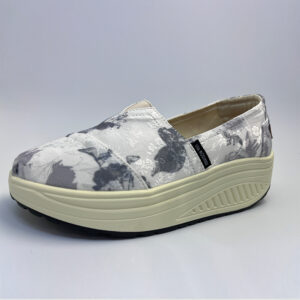Over time, running shoes will naturally wear out due to the stress and impact they endure during running. It’s important to recognize the signs of wear to ensure optimal performance, support, and injury prevention.
Here are some common signs that indicate your running shoes may be wearing out:
Decreased Cushioning: One of the primary indicators of worn-out running shoes is diminished cushioning. If you start to feel increased impact or discomfort during your runs, it could be a sign that the midsole foam or cushioning materials have compressed over time. You may notice a loss of bounce or responsiveness in the shoe.
Visible Wear Patterns: Examine the outsole of your running shoes. If you see significant wear patterns, particularly in specific areas like the heel or forefoot, it suggests that the shoe has endured a lot of impact and may be losing its original support and traction.
Uneven Wear: Check the wear patterns on the outsole and midsole of both shoes. If you notice uneven wear, such as excessive wear on one side or in the heel area, it could indicate an imbalance in your gait or foot strike. Uneven wear may affect your running mechanics and increase the risk of injury.
Flattened Midsole: Press your thumb into the midsole of your shoe. If you can easily compress the midsole or if it feels significantly less supportive compared to when the shoes were new, it’s a sign that the cushioning has worn down.
Lack of Stability: As running shoes wear out, the stability features may become less effective. If you notice increased foot or ankle movement or a feeling of reduced support while running, it could be a sign that your shoes are losing their stability and may no longer provide the necessary support for your gait.
Excessive Flexibility: If your running shoes have become excessively flexible, especially in areas like the midfoot or arch, it could indicate that the shoe’s structure has weakened. A lack of structural integrity may affect your stability and increase the risk of foot and ankle injuries.
It’s important to remember that the lifespan of running shoes can vary depending on factors such as your running style, body weight, running frequency, and the terrain you run on. As a general guideline, most running shoes last between 300-500 miles, but it’s essential to pay attention to the signs of wear and replace your shoes when necessary to maintain optimal performance and reduce the risk of injury.
What are some tips for maintaining the lifespan of running shoes?
Proper maintenance can help extend the lifespan of your running shoes and ensure they continue to provide the support and performance you need. Here are some tips for maintaining your running shoes:
Rotate Your Shoes: Avoid wearing the same pair of running shoes every day. Rotating between two or more pairs allows the shoes to dry out and recover between runs, reducing the overall wear and tear. It also helps to prevent odor buildup.
Untie and Loosen Laces: Before taking off your running shoes, make sure to untie and loosen the laces. This prevents unnecessary stress on the shoe’s upper and helps maintain its shape over time.
Avoid Machine Washing: Running shoes are generally not suitable for machine washing. Instead, clean them by hand. Use a soft brush or cloth to gently remove dirt and mud from the uppers and outsoles. For stubborn stains, you can use a mild soap or a specialized shoe cleaner. China Running Shoes suppliers Allow them to air dry naturally, avoiding direct heat sources.
Protect from Excessive Moisture: Excessive moisture can lead to premature deterioration of running shoes. If your shoes get wet during a run, stuff them with crumpled paper or use shoe inserts to help absorb moisture. Avoid leaving them in damp environments or direct sunlight, as this can cause the materials to degrade.
Use for Intended Purpose: While running shoes are designed for running, using them for other activities like hiking or everyday wear can accelerate their wear and tear. Try to reserve your running shoes solely for running activities to maintain their performance and longevity.
Be Mindful of Terrain: Consider the type of terrain you run on and choose appropriate shoes. If you frequently run on rough or abrasive surfaces, it can cause more rapid wear on the outsole and upper. Having a dedicated pair of trail running shoes for off-road running can help preserve your regular running shoes.
Replace When Necessary: Pay attention to the signs of wear and the mileage you’ve put on your shoes. As mentioned earlier, most running shoes last between 300-500 miles, but this can vary. If you start experiencing discomfort, reduced cushioning, or notice significant signs of wear, it’s time to consider replacing your shoes to maintain optimal support and prevent potential injuries.
Remember, every runner is unique, and the lifespan of running shoes can vary based on individual factors. Regularly assess the condition of your shoes and listen to your body to determine when it’s time for a replacement. Investing in a new pair of running shoes is a worthwhile investment in your comfort and performance.
